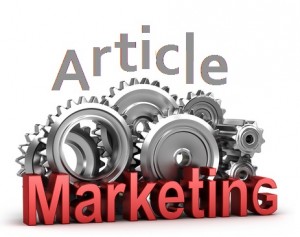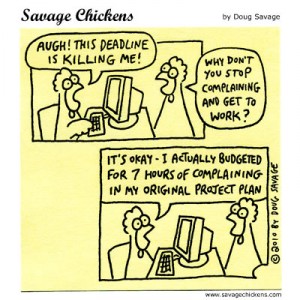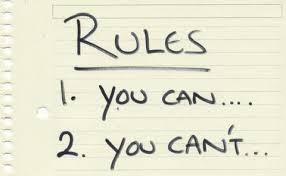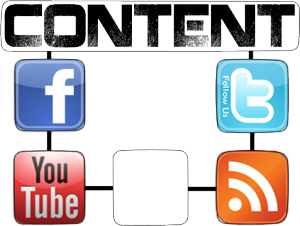Why Direct Mail Should Be Part Of Your Post-Event Marketing
So your trade show was a big success! You and your team had fun. The event helped you capture a lot of leads. Great! But your journey is just beginning. Now is the time to consider your post-event marketing strategy.
You captured leads at the trade show. Now, post-event, you need to nurture those leads. For that, you want an approach that involves multiple marketing channels. You have already harnessed the power of connecting with your leads face to face.
Now it’s time to leverage email, social media and content marketing.
Why not use another channel that has proven to be very effective at post-event marketing: direct mail?
Direct Mail Is Dead! Or Is It?
I have a pretty good idea what you are thinking: “Direct mail? Are you kidding me? Everyone knows that digital marketing is the way to go. Direct mail is dead!”
Is direct mail really dead? That’s what the digital marketing “conventional wisdom” might tell us, but maybe it’s not true. Plenty of B2B marketers like you are successfully harnessing the power of direct mail to help them nurture leads and boost sales results.
Direct mail marketing works!
According to one study, “direct mail proved the most effective advertising media. It outperformed digital channels consistently – and, in some cases, significantly. These findings suggest that while the digital space provides essential platforms for customer interaction, physical media is better suited to close the marketing-sales loop, or the gap between interaction and action.”
To quote marketing strategist and author, Elaine Fogel, “According to the Rain Group, half of B2B buyers prefer to be contacted by direct mail, 3rd out of a list of nine outreach methods.”
And…surprise, surprise! Apparently, even tech-obsessed millennials love direct mail:
“It’s been found that millennials who spend more time with physical ads have a stronger emotional response, leading to better memory of them. You could be on the list of the next generation’s most-loved advertising campaigns by optimizing your use of direct mail.”
Direct mail can indeed be a powerful addition to your post-event marketing. Combine it well with digital marketing channels such as email and social media, and you can enjoy a powerful synergy that drives your results even higher.
But you have to do it right. So let’s talk about how to do direct mail right.
Omnichannel Post-Event Marketing: Be Everywhere
A Proven Way To Fail With Direct Mail. Hint: Don’t Do This
We’ve all received direct mail marketing pieces we threw in the trash without even opening them. Why didn’t we? For one thing, they probably had a very generic, bland, “corporate” look to them. They were obvious solicitations, and in addition to looking like they came from a big, impersonal company that cared nothing about us, the envelope gave us little incentive to open it.
If we did read it, we were not impressed. The letter’s content was focused on the company and how wonderful its products were, instead of where attention needed to be placed – on us! It did not empathetically focus on our problem and helping us solve it. It merely peddled a product.
“Letters From Grandma”
So what should you do instead? How do you make your direct mail stand out in a positive way from the onslaught of corporate “junk mail” your leads are receiving? Choose a marketing service that supports adding handwritten letters to an automated post-event marketing workflow. Then, take additional steps to make your letter personal. Make it look like a “letter from Grandma”.
Think about it: any letter or piece of mail that looks personal, that appears as if it came from an old friend or family member, is almost guaranteed to get opened.
What do these letters have in common? A handwritten address on the envelope. A “real” stamp, not one from a postage meter. When you open it, you read a conversational message written to an audience of one. You see a word you love: “you”! We all love to hear or read the words “you” and “your”.
“Great To Meet You!”
Want to give your post-event direct mail an even more personal touch that will help you nurture your leads better? Mention your shared experience, the event itself. Talk about how much you enjoyed meeting and visiting with them. Reference something specific from your in-person conversation, especially as it relates to their problem and how you can help them solve it.
Don’t Forget About Postcards
Why not consider using postcards in addition to, or even in place of letters? Postcards get attention. They are a visible, tangible reminder of your brand and your products to your trade show leads. Here’s a great benefit of postcard marketing: it’s easier for you to get your message to your readers. Why? They have to open a letter. But, a postcard catches a reader’s attention from the moment it comes into view.
A big part of post-event marketing success is building Top of Mind Awareness (TOMA) in your audience. Done right, postcard marketing can help you do this. Postcards catch attention at the mailbox. Your message is likely to get read. There’s a good chance your leads will hang onto your postcard and leave it on their desk.
The result? Every time they see your postcard they think of you. If they think about you often enough, who will they most likely contact when they are ready to buy? You!
What’s Your Ultimate Goal With Direct Mail?
Remember that your ultimate goal with post-event marketing and lead nurturing is to convert your reader into your customer. So keep moving them through your marketing/sales pipeline. At the end of each direct mail piece, have a call to action that encourages them to take the next step in the buyer’s journey.
This may be directing them to make a phone call. It may be telling them about a personalized URL where they can join your email list and download your latest whitepaper. It may be a big announcement about an exciting live event you are hosting.
With direct mail or any other marketing communication, your call to action is crucial. It pays to discover more about this fascinating and potentially profitable topic.
Bottom line: always remember that your goal with direct mail is to drive the lead nurturing process forward and convert your reader into a paying customer.
Your Post-Event Marketing Toolbox
As with all of your marketing initiatives, think of the lead nurturing you do as if it were a construction project. It’s absurd to think you could build a house with only one tool, right? You need a well-equipped toolbox. The same thing goes for your trade show-related lead capture and nurturing.
Think omnichannel marketing, rather than one-channel marketing. As we’ve discussed today, direct mail can be one of your most effective post-event marketing channels.
You can win at direct mail marketing. Lead Liaison’s marketing automation capabilities can help you. We’ll make designing your next mail campaign easy. Want to find out more? Get in touch today!












